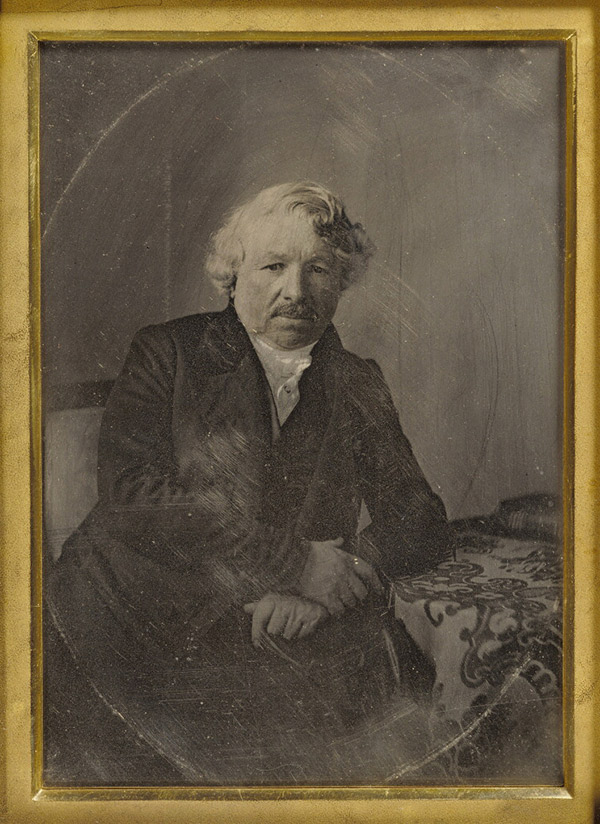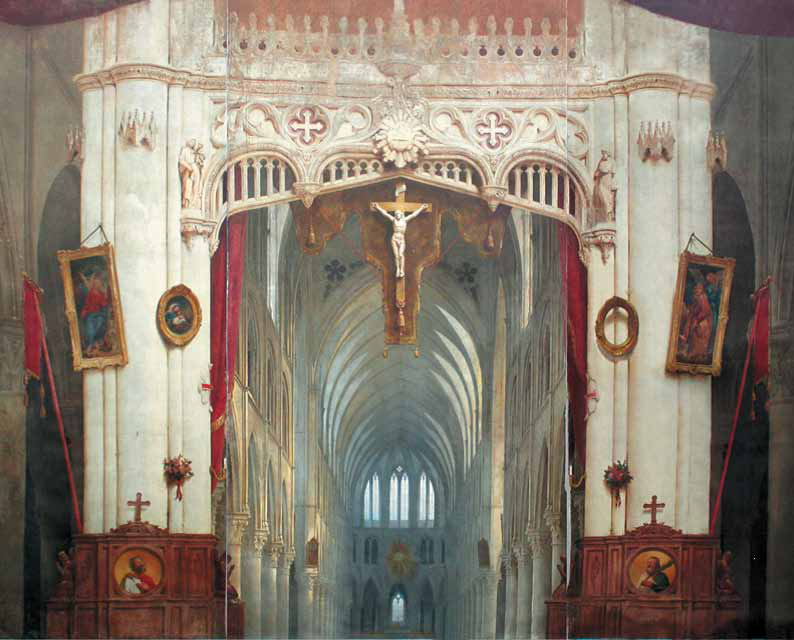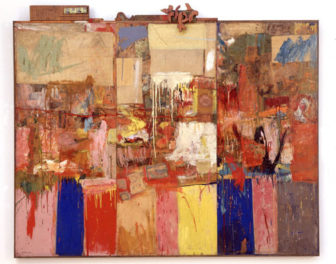
Portrait of Louis-Jacques-Mandé Daguerre, 1848, Charles Richard Meade. Hand-colored daguerreotype, 6 3/16 x 4 1/2 in. The J. Paul Getty Museum, 84.XT.953
Fascinated by nature of light and best known for his invention of the daguerreotype, Louis-Jacques-Mandé Daguerre also was an inventor and painter. He created a number of unique paintings in the early 1800s which he dubbed “dioramas”—scenes reproduced on semi-transparent fabric illuminated by cleverly devised light reflection, transmission, and refraction techniques. These works of art appeared to move and change in such a realistic manner that they were sometimes referred to as performances of realistic illusion, and were arguably the precursors to cinema and 3D imagery.
Since 2007, the town of Bry-sur-Marne, located on the east bank of the river Marne outside Paris, has been working to conserve the final and only remaining example of a diorama by Daguerre still in existence today, and a grant from the Getty Foundation has helped make it possible.
Made for the church of St. Gervaise and St. Protais, Daguerre spent six months creating the monumental painting that would become his final diorama. The image—which is 18’ 4” high by 20’ 7” wide —depicts the choir in a Gothic cathedral and gives the illusion that the shallow apse of the church is actually a vast space. When it was first constructed, the natural light entering through a glass opening at the top of the diorama varied, at times making the image appear as if lit by flickering candles. The construction of the diorama was ingenious: it was essentially a small rotunda built on a pivot, allowing for scene changes. Whether a day or night lighting effect was used, Daguerre succeeded in making the still image come alive.

The effect of daylight (by reflection) on the canvas when lit from the front. Courtesy of the office of Mayor Spillbauer of Bry-sur-Marne

Nighttime effect (by refraction) when the canvas is backlit. Courtesy of the office of Mayor Spillbauer of Bry-sur-Marne
Despite being designated as a historical monument in 1913, the diorama spent the 20th century in an increasingly deteriorating condition. But in 2006, Bry-Sur-Marne Mayor Jean-Pierre Spilbauer, aware of the cultural and historical importance of the diorama, vowed to save it.
The conservation of the historic work was quite an undertaking, first requiring the careful removal of dirt and yellowed varnish from the pictorial layer. Conservators on the project conducted extensive paint-layer analysis and repaired surface fragmentation on the painting.
After removing the old lining that had been applied when the diorama was deinstalled from its original setting, conservators backed the canvas with a material that brought back some of the artwork’s luminosity, while also providing additional structural stability. The Getty Foundation funds were used for the conservation and re-mounting of the painting.

Conservation work being undertaken on Daguerre’s last surviving diorama in Bry-Sur-Marne, made possible by a grant from the Getty Foundation. Courtesy of the office of Mayor Spillbauer of Bry-sur-Marne.
The conservation of the diorama is not the only Daguerre project Bry-sur-Marne is undertaking. The old Daguerre residence has been purchased by the town and is now a museum devoted to the artist and inventor that houses collections related to Daguerre owned by the city. In addition, the city is hosting events and exhibitions in connection with Daguerre’s art and inventions, and is looking to be a resource center for researchers and a destination for tourists interested in Daguerre.
This Saturday, September 14, marks a special occasion—the town is holding a celebration in honor of the 100th anniversary of the diorama’s classification as a historical monument, and opening a related exhibition of Daguerre’s work.
For more information on this fascinating project, you can visit the Bry-sur-Marne website here.




Comments on this post are now closed.
Trackbacks/Pingbacks